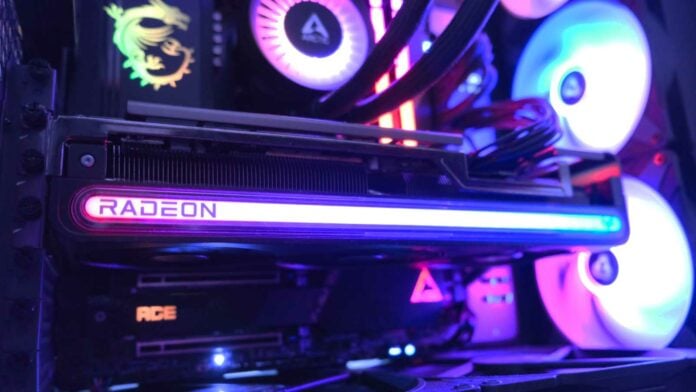AMD is officially turning its attention towards mid and low-range GPUs with its next generation. Radeon RX 8000 Series graphics cards powered by RDNA 4 chips will not feature high-end models, at least initially.
Following numerous rumours stating that Team Red is leaving the high-end GPU segment, we finally got an official answer to our questions. AMD seems no longer interested in chasing the fastest chips possible. The new strategy will focus on grabbing more market share by focusing on the budget segments where its current generation already shines. The brand learned that playing who has the biggest one didn’t net the desired results.
According to AMD’s senior vice president, Jack Huynh (via Tom’s Hardware), the company will switch its focus to market share instead. Indeed, AMD lags in this department as the latest data gives it a mere 12% compared to Nvidia’s 88%. To begin with, the initial aim is to climb to a 40% or 50% share, which is significantly higher but not an impossible feat. It’s important to note, however, that Huynh didn’t state abandoning halo products, so we may end up seeing a multi-chiplet monster down the line.
That said, this doesn’t mean Radeon GPUs will offer bad performance. According to multiple rumours, AMD is targeting RX 7900 XTX or RTX 4080 level of performance, all while potentially coming at a lower price. What’s not to like? This is also not the first time AMD has gone this route, as it did the same thing five years ago with its Radeon RX 5000 series – based on the RDNA 1 architecture. I can’t say just how far they’ll lower, but anything below $500 is welcome, given just how much the market has changed over the past four years.
While this strategy will undoubtedly mean AMD loses some high-end margins, sheer sales figures should compensate if all goes well. Not to forget that its chips power many gaming consoles and handhelds. Another benefit of a wider reach is better game optimisation, as developers should be enticed to support the larger audience without any intervention. As for the server segment, AMD will still offer top-notch products, such as the MI300, for high-performance and AI workloads.
The next-gen GPU fight is shaped to star Intel and AMD battling for the value proposition, with Nvidia sitting high on its golden throne, at least for some time. Nothing to complain about, as the end user is likely to benefit from a much-needed price war. That said, for those who like to get the best graphics card, Nvidia is likely to be alone, selecting pricing as it pleases – unless Intel or AMD surprises us with a beast chip. Interesting times ahead. We should find out more next month.

